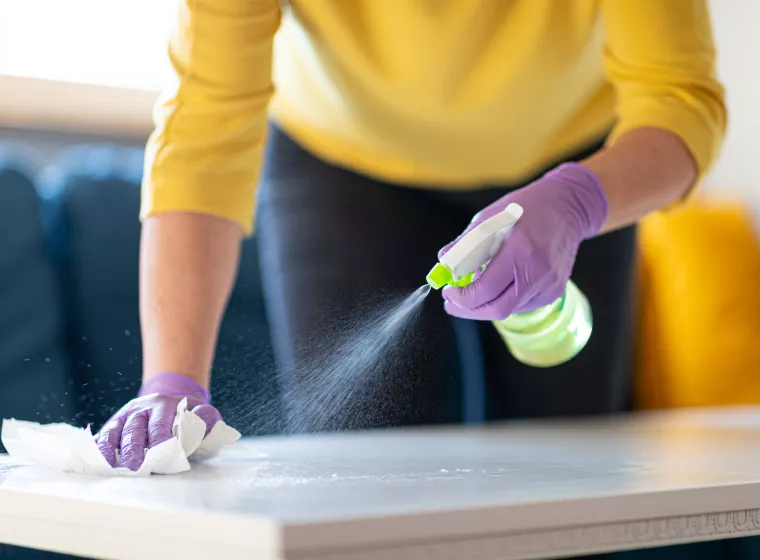May 31, 2023
A proposal from the Biocides Coordination Group addresses how to determine the use concentration and contact time for disinfectant biocidal products
A proposal from the Netherlands Competent Authority agreed to by consensus at the Biocides Coordination Group on February 23, 2023, addresses how to determine the use concentration and contact time of disinfectant biocidal products for various groups of target organisms. The proposal recommends that the contact time or use concentration in the efficacy tests of the optional target organisms should preferably be identical to the contact time or use concentration of the obligatory organisms.
ECHA guidance on biocides legislation describes how to fulfil the information requirements set by the Biocidal Products Regulation, Regulation (EU) 528/2012) (BPR), and how the required assessments should be performed. Guidance on the BPR, Volume II Efficacy, Assessment + Evaluation (Parts B+C), includes disinfectants with guidance for the five different product types (PT): PT1, human hygiene; PT2, disinfectants and algaecides not intended for direct application to humans or animals; PT3, veterinary hygiene; PT4, food and feed area; and PT5, drinking water.
Efficacy testing for PT1-5 applications often uses a variety of different concentrations and contact times for the various groups of target organisms. Although the substantiated pass concentrations and contact times for disinfectants are clear, determining the use concentration and contact time for a given biocidal product is not always straightforward. A complicating factor is that not all target organism groups should be treated as equal because some are obligatory while others are optional for certain applications. At minimum, however, the biocidal treatment should be effective against the obligatory organisms.
A proposal to address use concentration and contact time was briefly introduced during the 54th meeting of the BPR Coordination Group (CG-54) in late 2022 and, with minor modifications, agreed to by consensus at the subsequent CG-55 in February 2023 as follows.
PT1-5 use concentration and contact time: How to determine the use concentration and contact time for the biocidal products with avariety of different test concentrations and contact times for the various groups of target organisms.
- Rule 1: The obligatory organisms should get the same use concentration and contact time based on provided test data.
- Rule 2: Optional target organisms can never be assigned a shorter contact time or lower use concentration compared to the obligatory organisms. The background for this proposal is that a disinfectant should work as a minimum against the obligatory organisms. Therefore, additional optional organisms claimed can never get a shorter contact time or a lower use concentration because the basic efficacy cannot be guaranteed at this contact time and use concentration.
- Rule 3: Optional organisms with a higher pass concentration will get a separate dosage recommendation. Optional organisms with a longer pass contact time will get a separate contact time.
Producers and users of biocidal disinfectants will need to be aware of these rules to correctly claim contact times and use concentrations in product labels for disinfectant biocidal products. Exponent can help you identify the correct contact time and concentration for optional microorganisms.
What Can We Help You Solve?
Whether outlining a strategy to register a pesticide in the U.S., EU, U.K., Canada, or globally, assessing the quality and compliance of food and food ingredients, food products, cosmetics and personal care products, or household goods and cleaning products, Exponent's multidisciplinary teams provide critical insight and support for navigating global regulatory challenges.

Biocides in Europe
Full product lifecycle strategy support, specializing in active substances.

Biocides & Antimicrobials
Expertise in multifaceted regulatory requirements in biocide and antimicrobial product approval processes.



